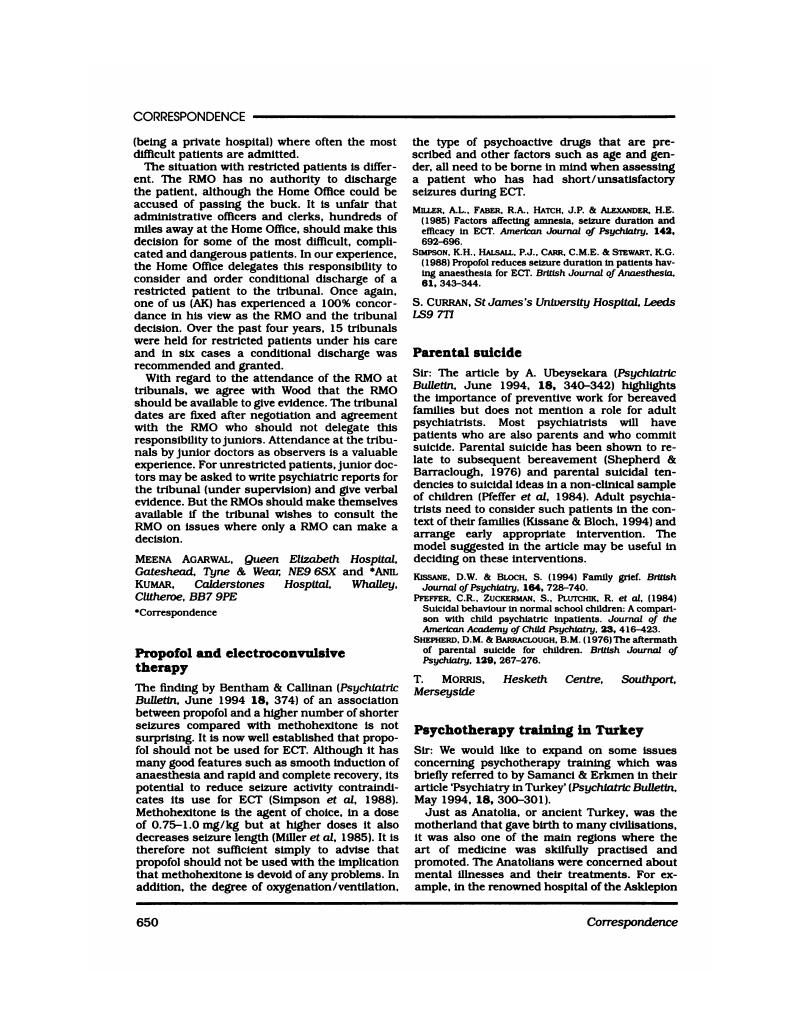No CrossRef data available.
Article contents
Propofol and electroconvulsive therapy
Published online by Cambridge University Press: 02 January 2018
Abstract
An abstract is not available for this content so a preview has been provided. As you have access to this content, a full PDF is available via the ‘Save PDF’ action button.

- Type
- Correspondence
- Information
- Creative Commons
- This is an Open Access article, distributed under the terms of the Creative Commons Attribution (CC-BY) license (http://creativecommons.org/licenses/by/4.0/), which permits unrestricted re-use, distribution, and reproduction in any medium, provided the original work is properly cited.
- Copyright
- Copyright © Royal College of Psychiatrists, 1994
References
Miller, A.L., Faber, R.A., Hatch, J.P. & Alexander, H.E. (1985) Factors affecting amnesia, seizure duration and efficacy in ECT. American Journal of Psychiatry, 142, 692–696.Google Scholar
Simpson, K.H., Halsall, P.J., Carr, C.M.E. & Stewart, K.G. (1988) Propofol reduces seizure duration in patients having anaesthesia for ECT. British Journal of Anaesthesia, 61, 343–344.Google Scholar



eLetters
No eLetters have been published for this article.